Free download: Top 10 Natural & Easy Remedies for Joint Pain from Home. Learn these helpful remedies.
Estimated Reading Time: 9 minutes read
As we age, back problems become increasingly common. This often results from natural muscle and joint weakening, degenerative changes in the spine, and a sedentary lifestyle.
Exercise is crucial for maintaining a healthy back and preventing these issues. Regular physical activity strengthens the muscles supporting the spine, improves posture, and increases flexibility. This, in turn, reduces the risk of back pain and injuries.
Resistance bands are an excellent exercise tool for this purpose. They offer adjustable resistance, are gentle on the joints, and can be used for various exercises.
Table of Contents
Why Back Problems Are Common
- Muscle Weakness: As we age, our muscles, including those that support the spine, naturally weaken. This weakness makes it difficult to maintain proper posture and conduct daily activities, increasing the risk of back pain and injuries.
- Degenerative Changes: The spine undergoes degenerative changes over time. Intervertebral discs dry out lose their shock-absorbing abilities, and osteoarthritis can develop in the spine, leading to discomfort, reduced mobility, and potentially nerve compression.
- Sedentary Lifestyle: Extended periods of sitting lead to muscle stiffness, poor posture, and back pain. Sitting flattens the lumbar curve of the spine, increases pressure on the intervertebral discs, weakens the back muscles, and ultimately increases the risk of back problems.
- Excess Weight: Being overweight or obese puts additional pressure on the back, as the muscles and spine have to support the extra weight. This increased load can lead to muscle strains, back pain, and degenerative changes in the spine.
- Poor Posture: Maintaining poor posture for extended periods puts strain on the back muscles and intervertebral discs, increasing the risk of back pain and degenerative changes in the spine.
- Lack of Physical Activity: A lack of regular physical activity leads to muscle weakness, reduced flexibility and makes it challenging to maintain a healthy weight, all of which increase the risk of back problems.
Importance of Exercise
- Maintaining a Healthy Weight: Regular physical activity is essential for maintaining a healthy weight. Being overweight or obese puts additional pressure on the back, as the muscles and spine have to carry the extra weight. This increased load can lead to back pain, muscle strains, and degenerative changes in the spine.
- Strengthening Supporting Muscles: Regular exercise strengthens the muscles that support the spine, including the back, abdominal, and hip muscles. Strong supporting muscles are crucial for maintaining proper posture and spinal alignment, reducing the risk of back pain and injuries.
- Improving Posture: Exercise helps improve posture by strengthening the muscles required to maintain an upright position. Good posture reduces the strain on the back muscles and intervertebral discs, decreasing the risk of back problems.
- Increasing Flexibility: Regular physical activity increases flexibility, which is essential for maintaining a healthy spine. Flexible muscles and joints allow for a greater range of motion, reducing the risk of muscle strains and joint injuries.
- Reducing the Risk of Back Pain and Injuries: Regular exercise strengthens the back and core muscles, improves posture, increases flexibility, and helps maintain a healthy weight. All these factors combined significantly reduce the risk of back pain and injuries.
Targeted Resistance Band Exercises for a Stronger Back
Having a strong back is essential for good posture, daily activities, and preventing back pain and injuries. The exercises listed below are designed to target and strengthen your back and core muscles. These muscles are crucial for supporting your spine.
Incorporating these exercises into your regular fitness routine can help improve your posture, reduce the risk of back pain and injuries, and enhance your overall quality of life. Always consult your healthcare provider before starting any new exercise regimen.
1. Shoulder Extension with Resistance Band
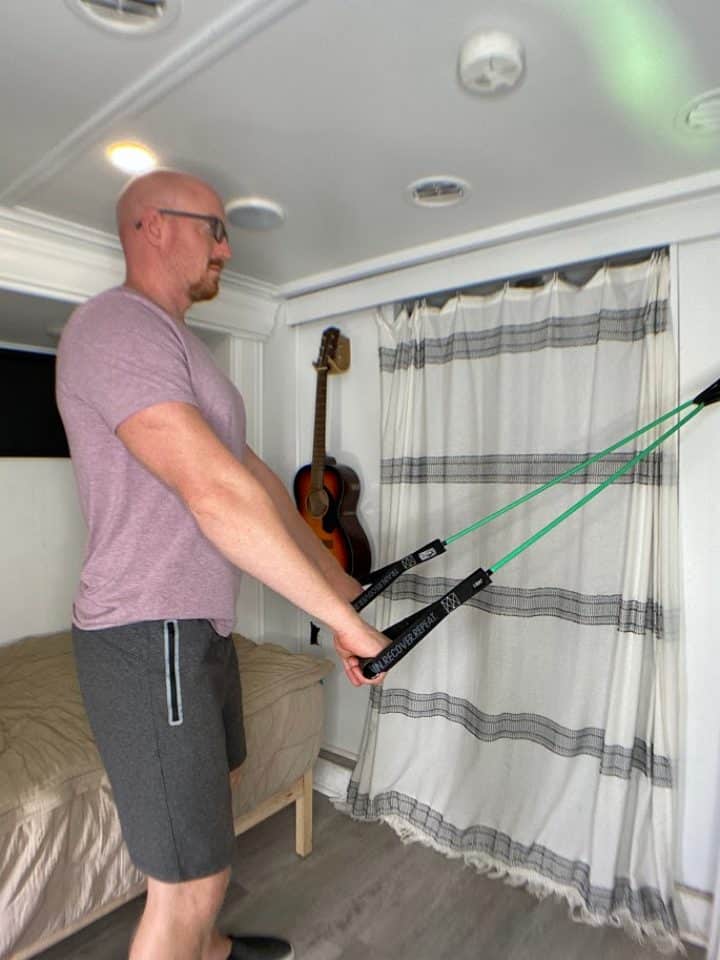
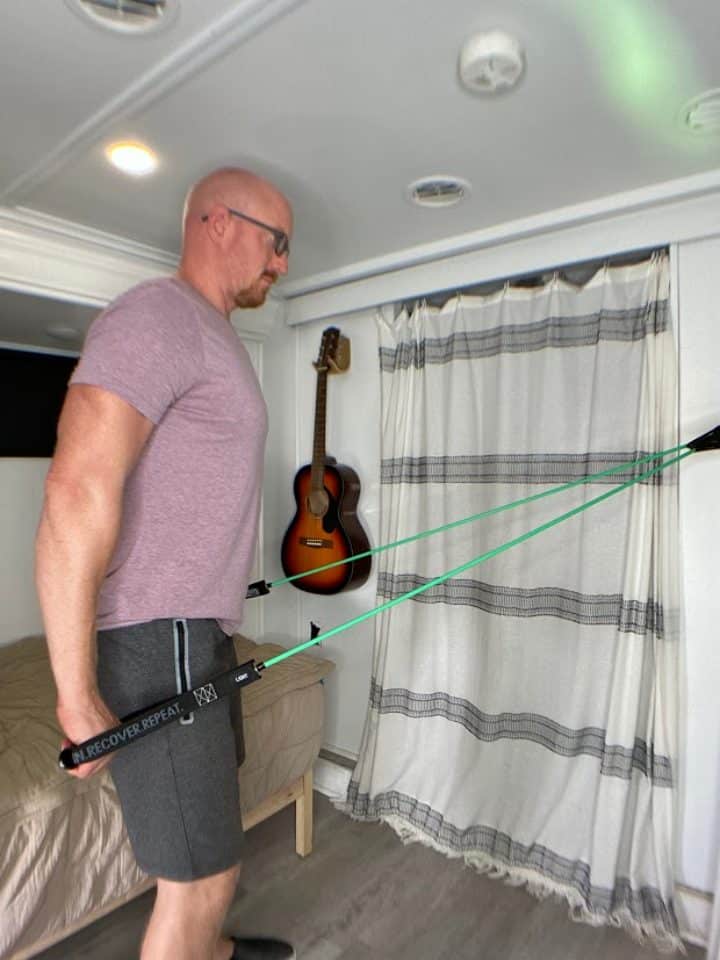
- Hold on to the ends of a resistance band (light, medium or heavy), which you can attach to a door knob.
- Begin with the arms elevated in front of you to shoulder height and the palms facing down towards the floor.
- Squeezing the shoulder blades down and back, pull back on the resistance band, and swing the arms back until they are next to you.
- Hold for 2 seconds, then lower back to your starting position.
- Repeat 10-15 repetitions for 2-3 sets.
2. Upright Row
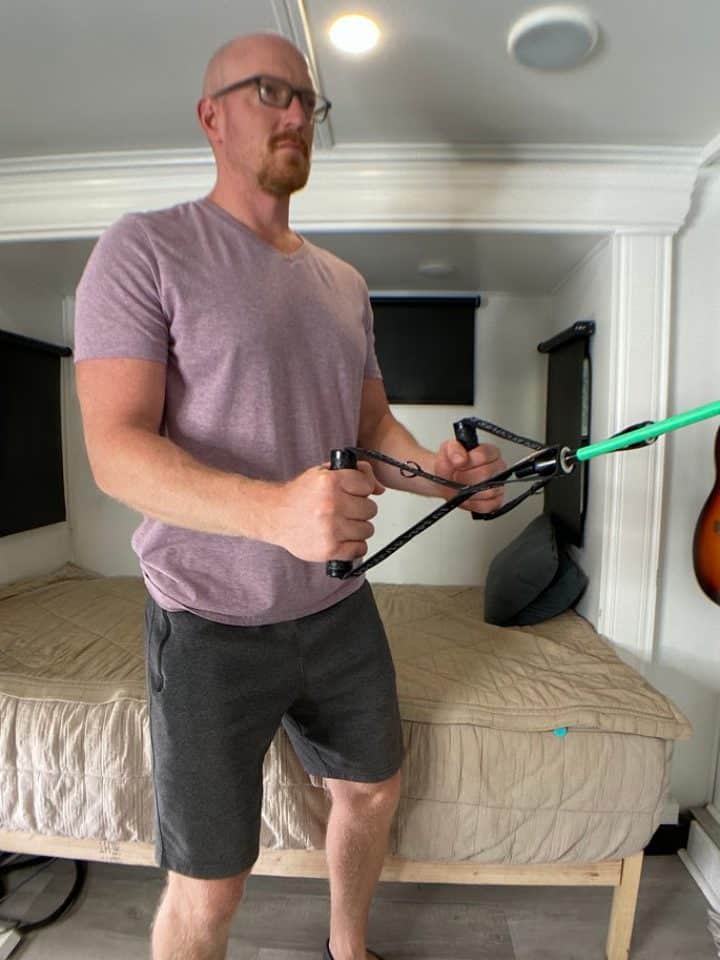
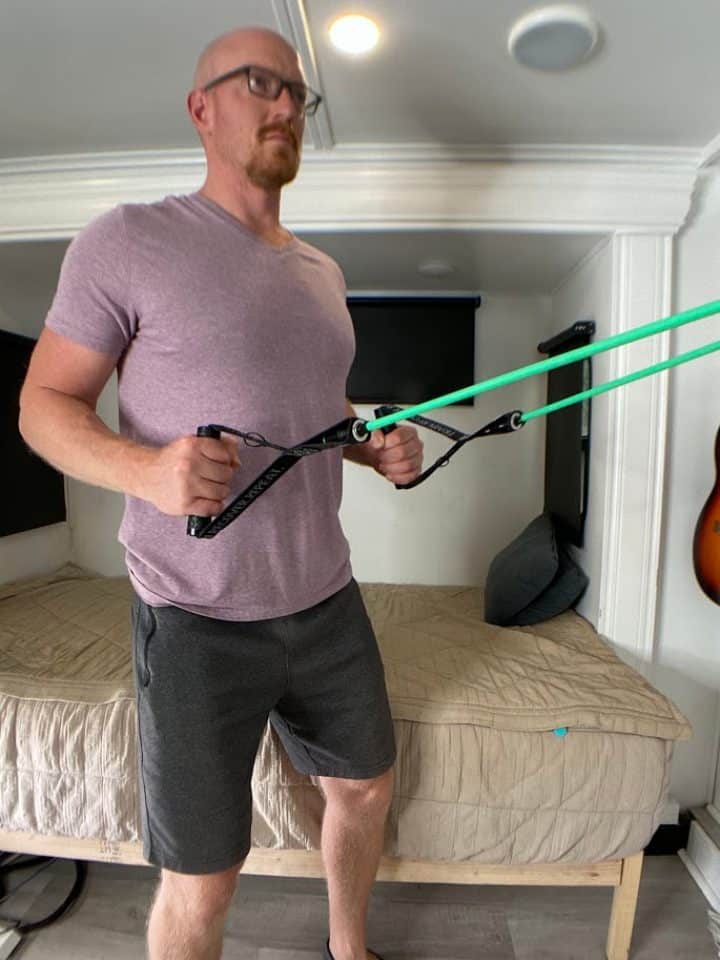
- Hold on to the ends of a resistance band (light, medium or heavy), which you can attach to a door knob.
- Begin with the arms elevated in front of you to shoulder height and the palms facing each other.
- Step back far enough that the resistance bend has a little tension.
- Pull back on the band by bending the elbows and swinging the arms back next to you. Make sure to squeeze the shoulder blades together.
- Hold for 2 seconds, then return to your starting position.
- Repeat 10 repetitions for 3 sets.
3. External Shoulder Rotation with a Resistance Band
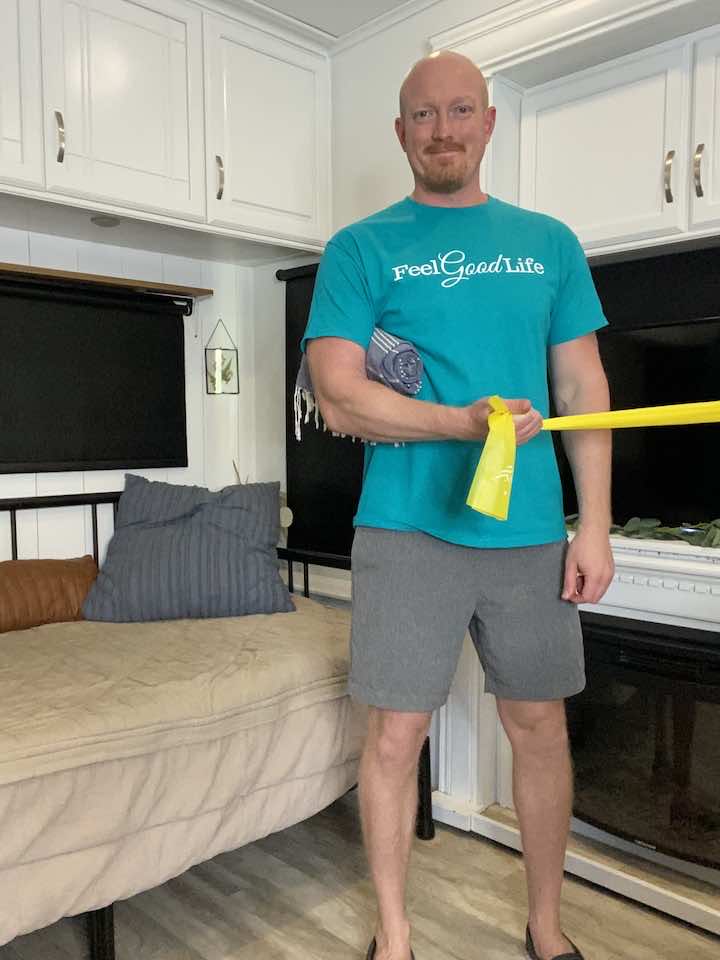
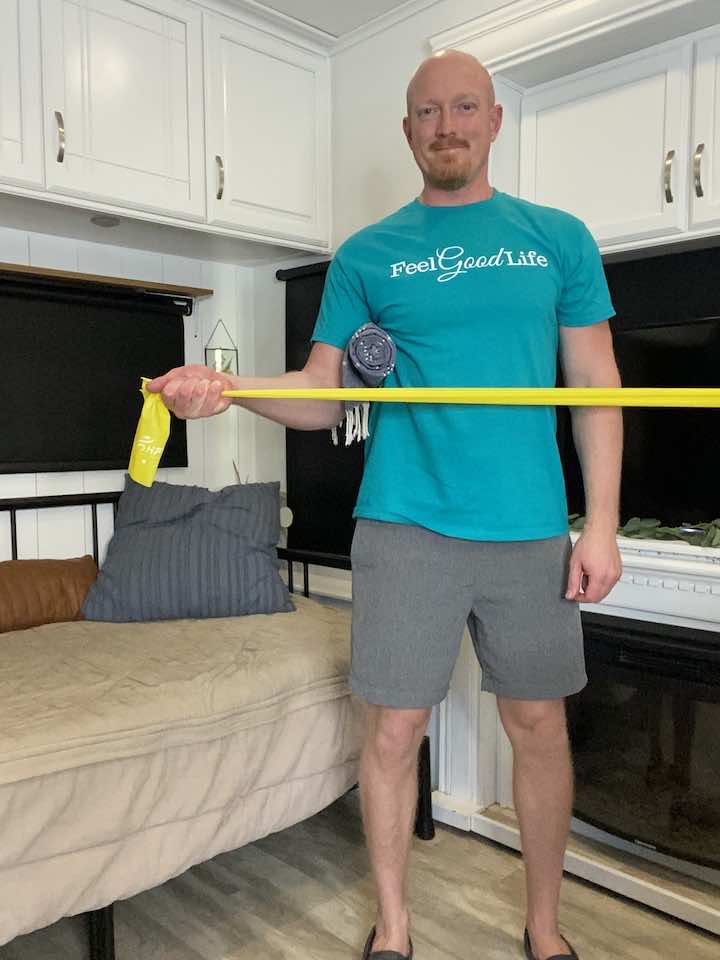
- Attach one end of the resistance band to a secure location, such as a doorknob or post, at the height of your elbow to perform the correct motion.
- Stand facing the band and hold the other end with your hand on the same side, elbow bent at a 90-degree angle and tucked by your side, and palm facing towards your body.
- Keeping an upright posture, slowly pull the band away from your body, rotating your arm outward and away from your torso while maintaining the 90-degree angle of your elbow.
- Hold this position for 2 seconds, then return to your starting position.
- Repeat the movement for 10 repetitions, then switch to the other arm.
- Aim for 3 sets of this exercise.
4. Internal Shoulder Rotation with a Resistance Band
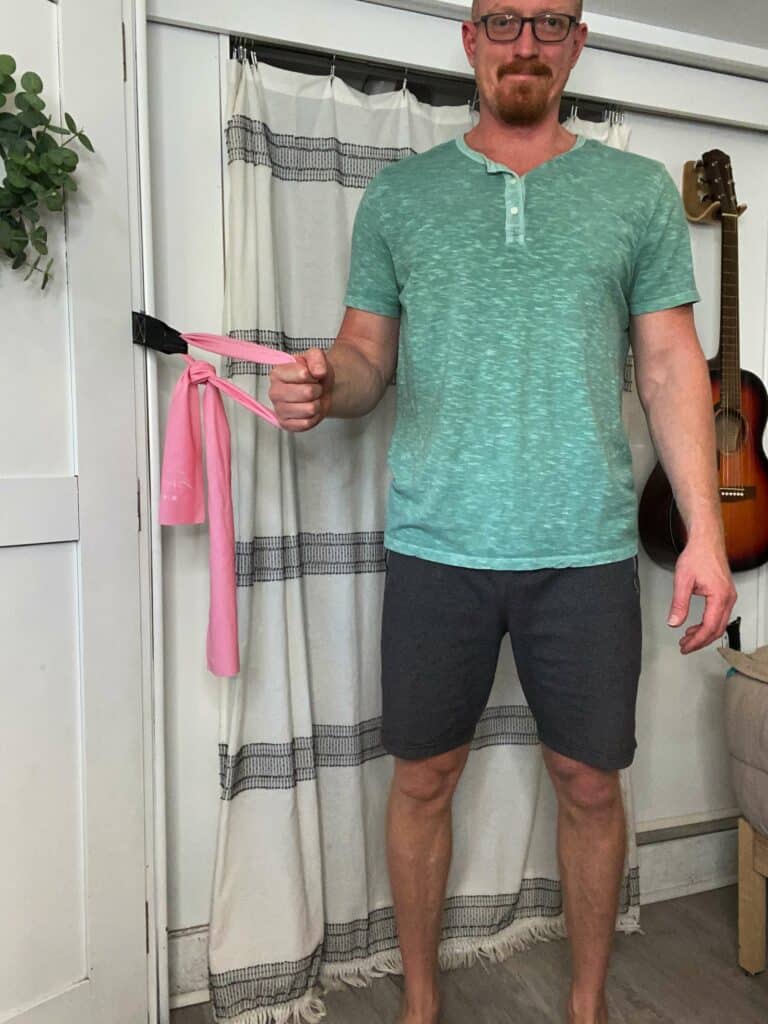
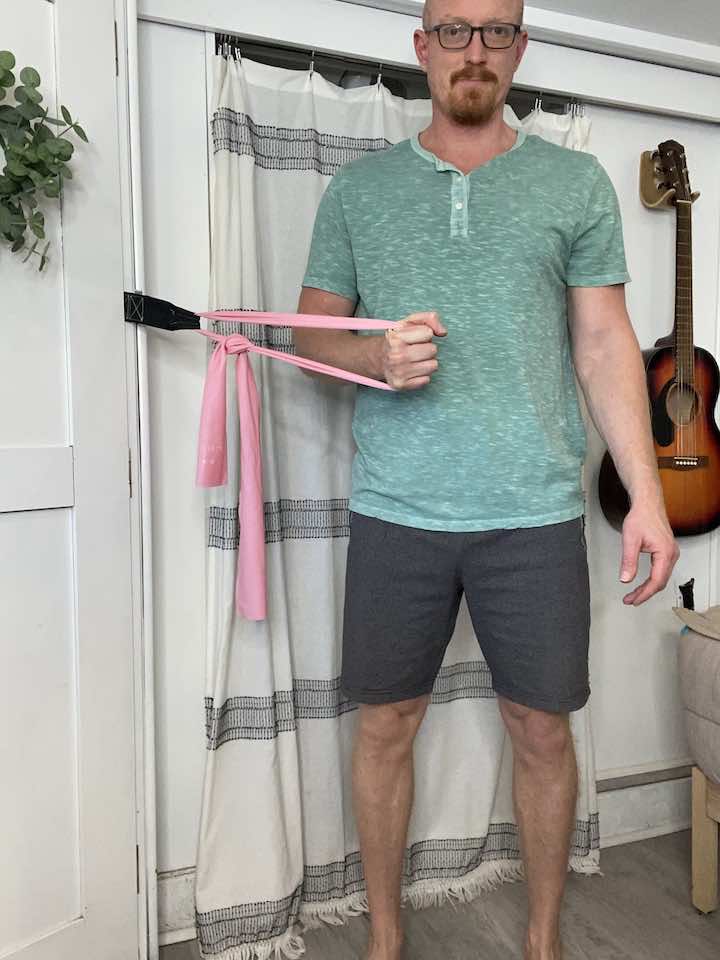
- To perform this exercise, you will need to attach one end of the band to a secure location, such as a doorknob or post, at the height of your elbow to perform the correct motion.
- Keeping an upright posture, slowly pull the band towards your stomach while maintaining the 90-degree angle of your elbow.
- Hold for 2 seconds, then return to your starting position.
- Repeat the movement for 10 repetitions, then switch to the other arm.
- Aim for 3 sets of this exercise.
5. Clamshells with Resistance Band
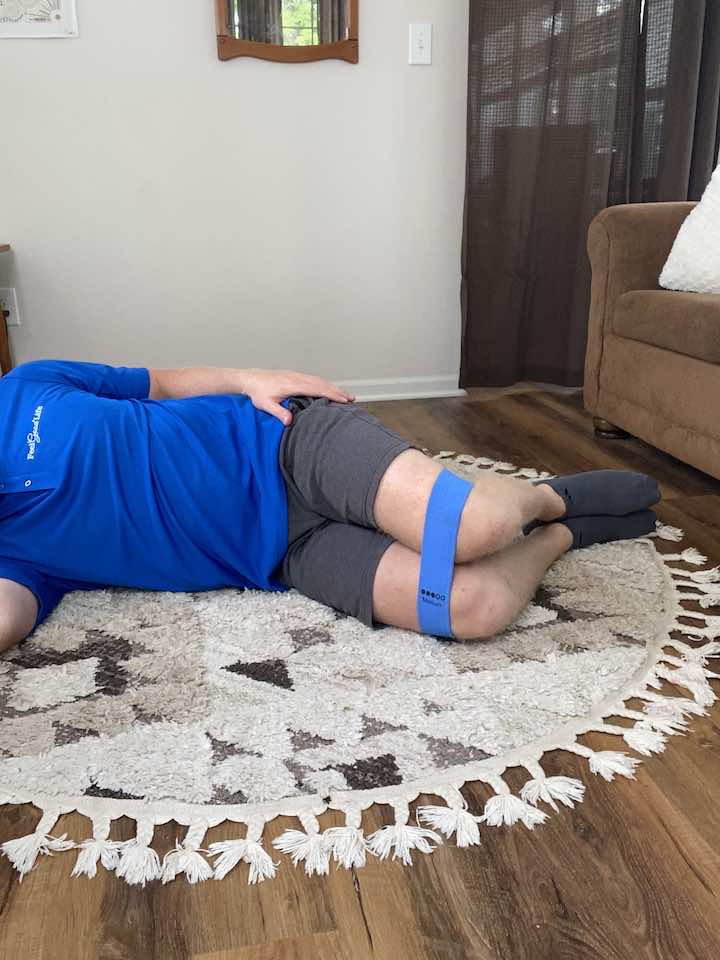
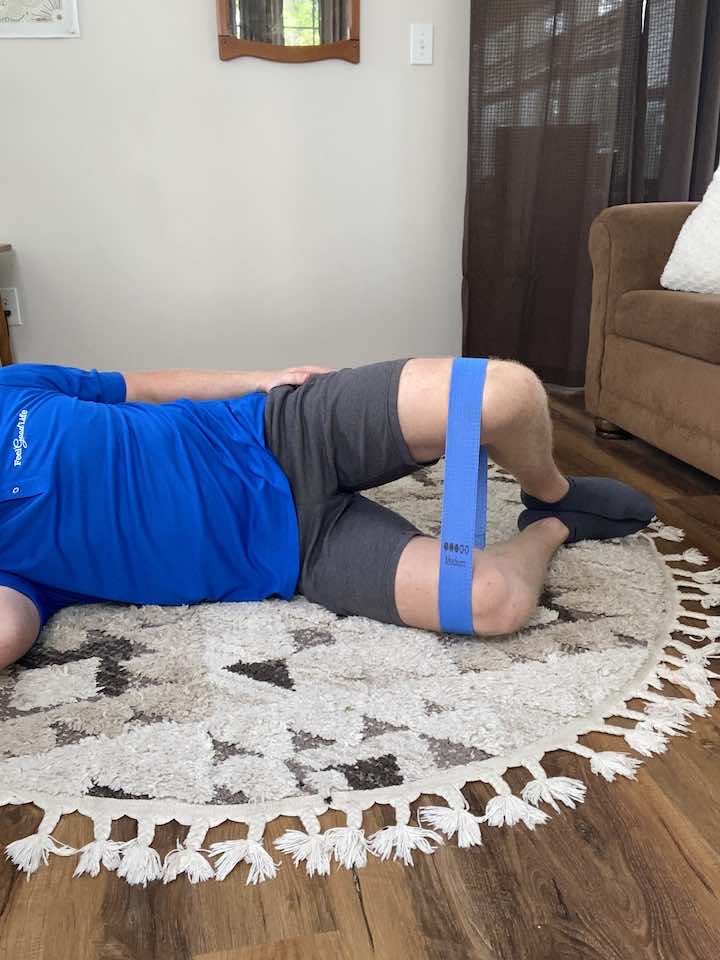
- Lie on your side with your legs bent at a 90-degree angle, one on top of the other.
- Place a resistance band around both thighs, just above your knees.
- Keep your feet together and your ankles touching.
- While maintaining this foot position, lift your top knee as high as you can without moving your pelvis. Focus on using the muscles on the side of your hip.
- Lower your top knee back to the starting position.
- Repeat the motion for the desired number of repetitions on one side.
- Switch to the other side and repeat the exercise.
- Perform a total of 10 repetitions and 3 sets.
6. Side-lying leg lifts with Resistance Bands
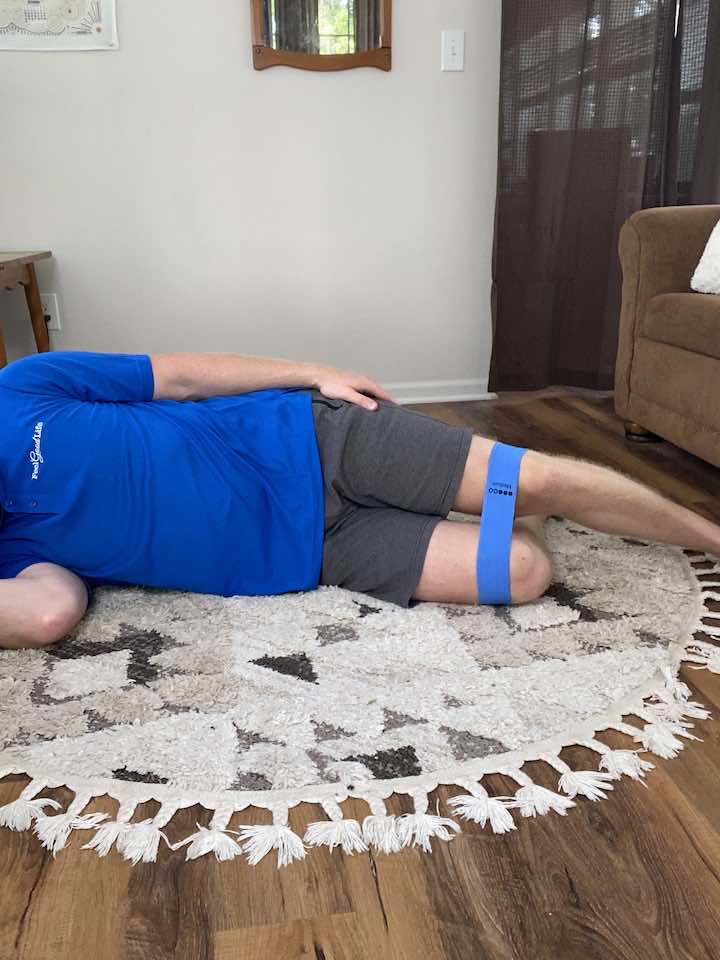
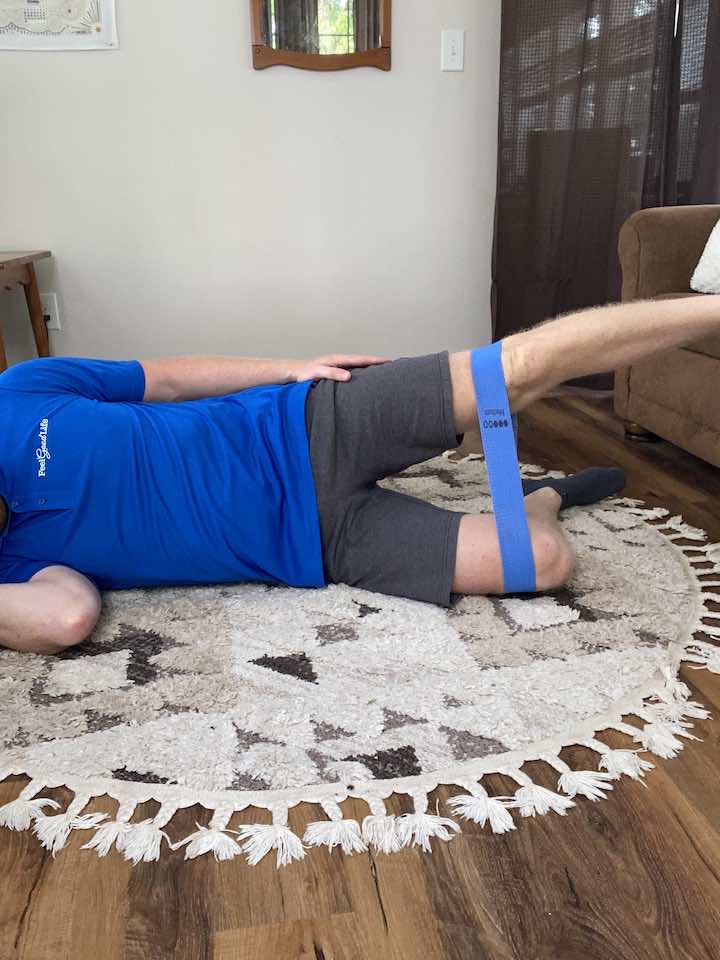
- Begin by lying on your side.
- Place a short resistance band around both legs just above the knee.
- Bend the leg that is on the bottom for stability.
- Lift the top leg (the one on the side facing upward) away from your body.
- Hold briefly at the top position.
- Return the working leg to meet the stabilizing leg.
- Perform 10 repetitions of this exercise for each leg.
- Complete a total of 3 sets on each leg.
Core Strengthening
Core strengthening is an essential aspect of maintaining a healthy back. Your core muscles, which include your abdominal muscles, back muscles, and the muscles around your pelvis, are essential for supporting your spine and maintaining proper posture.
By strengthening these muscles, you can reduce the risk of back pain and injuries, improve your posture, and enhance your overall physical fitness.
1. Abdominal Brace
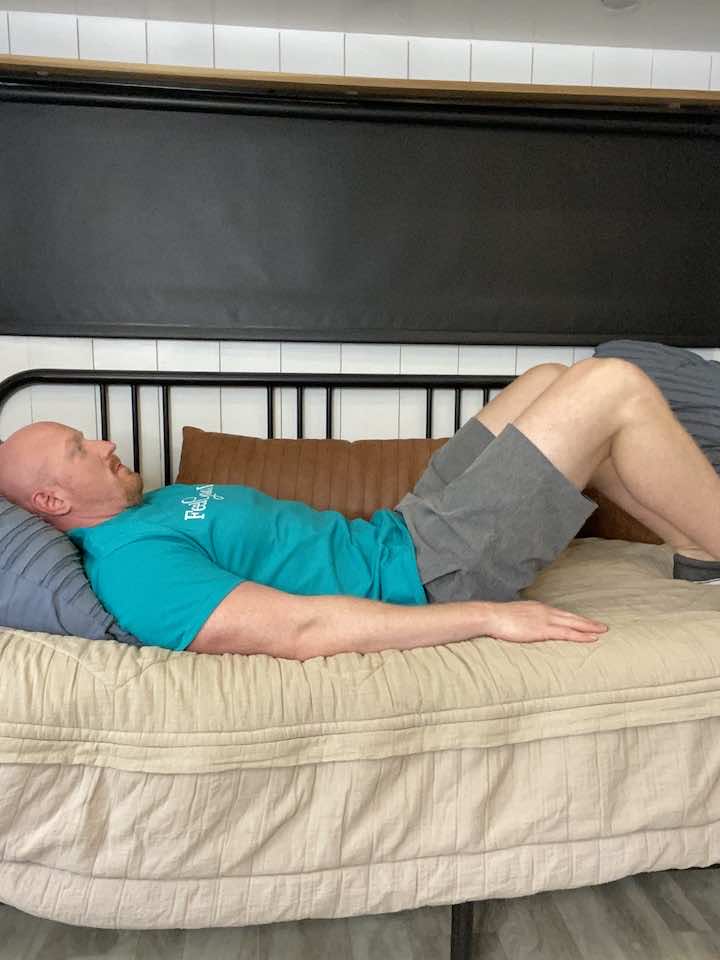
- Begin on your back with your knees bent and feet flat on the floor.
- Exhale and engage your core muscles by drawing your belly button in toward your spine.
- Hold this position for 5 seconds.
- Relax your core muscles.
- Repeat this exercise 10 times and a total of 3 sets.
2. Bent Knee Fallouts
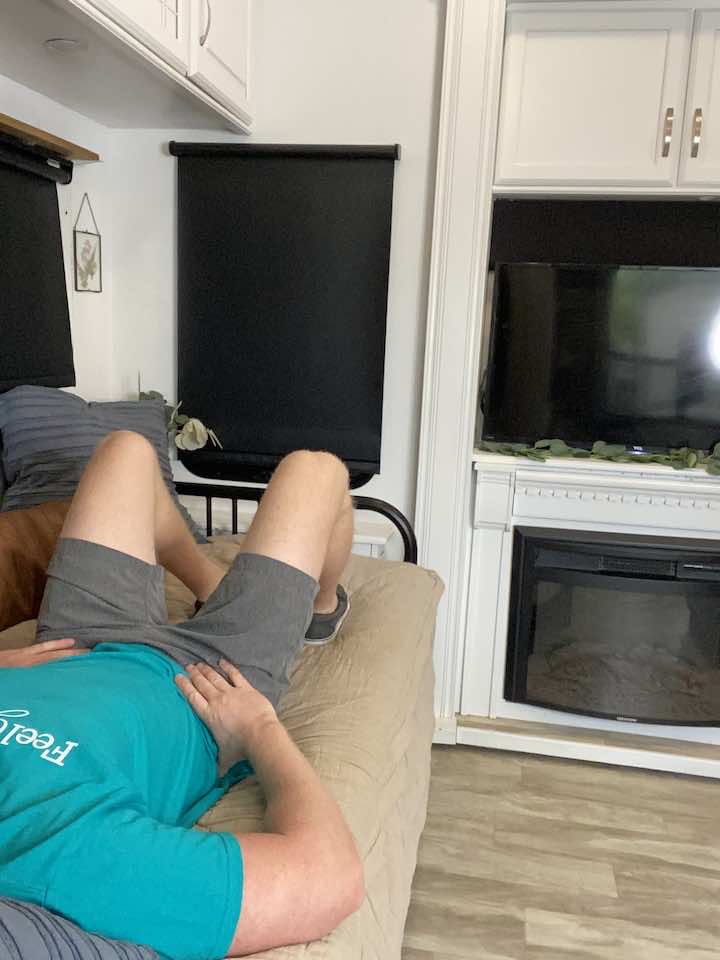
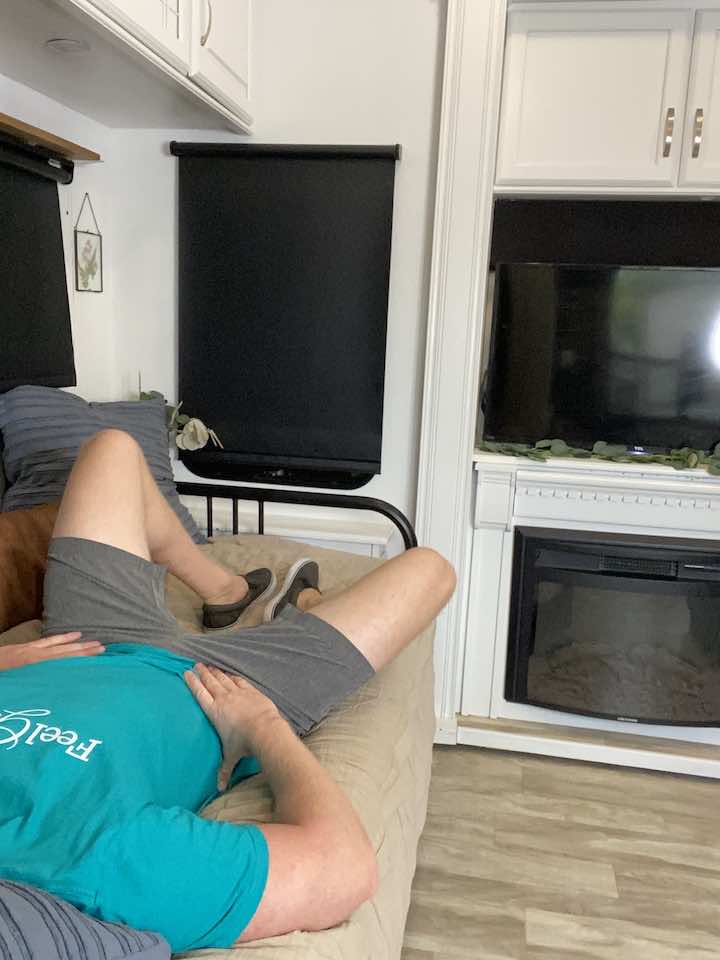
- Lie on your back with both knees bent and your hands resting on your hips.
- Engage your core muscles by gently bracing them, creating a feeling similar to a trampoline’s surface. Ensure this engagement feels subtle, without pushing your core up or sucking it in.
- Keep your left knee stationary, and slowly lower your right knee to the side at a 45-degree angle.
- Bring your right knee back to the center while maintaining core engagement. Focus on keeping your hips still during this asymmetrical movement.
- Use your hands on your hips to monitor for any hip movement. The goal is to keep your hips perfectly still throughout the exercise.
- Perform 10 repetitions and a total of 3 sets on the right side, then switch to the left side.
3. Marching Core
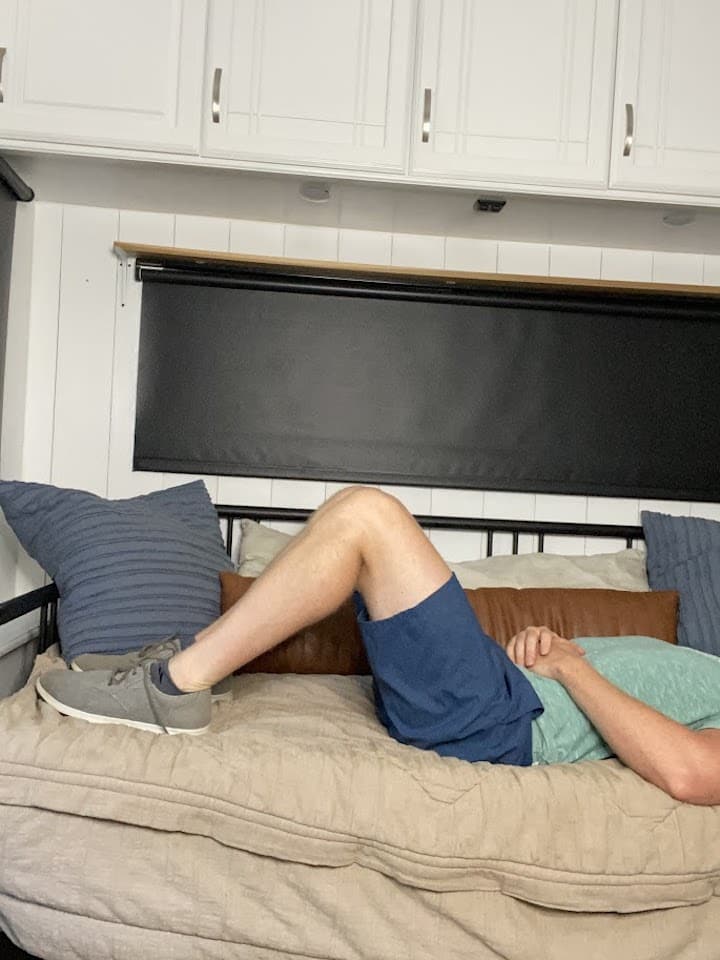
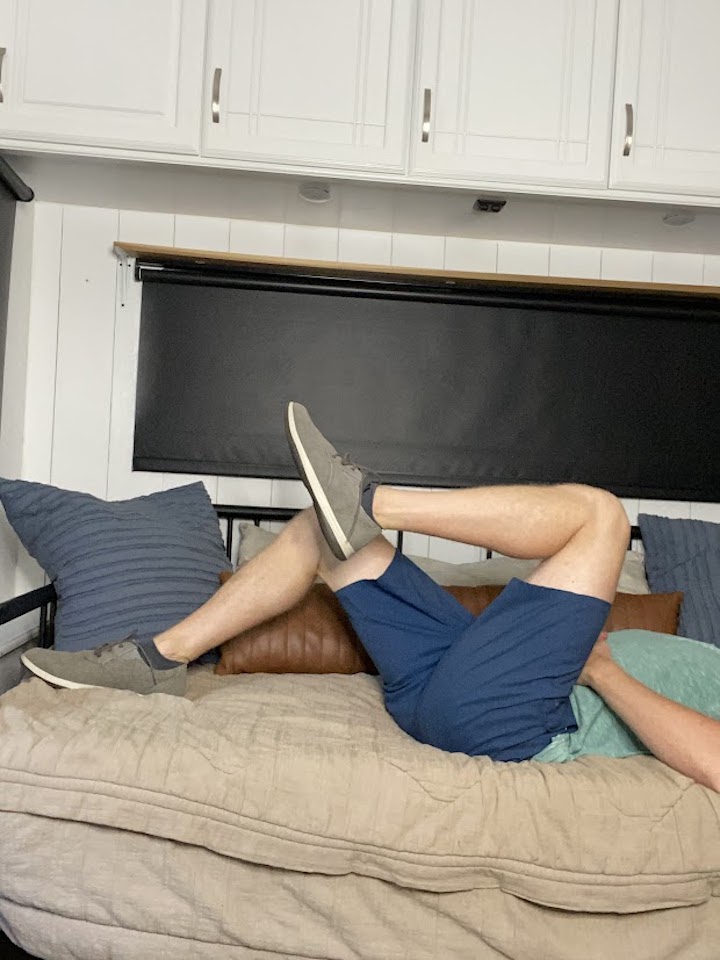
- Starting position: Laying flat on your back (on your bed, couch, or floor), with your knees bent and feet flat on the surface.
- To activate your transverse abdominis, try to pull the belly button down towards the surface, gently flattening the back simultaneously. This will help to brace the core.
- While keeping this braced core (don’t forget to breathe!), lift one knee towards your chest, like a march, then lower back down to the surface.
- Repeat 10 repetitions for 3 sets. Perform on the opposite leg.
- You can perform all repetitions on one side, switch to the other or perform alternatingly between the legs.
Avoiding Common Pitfalls: Essential Tips for Exercise
While exercise is crucial for maintaining a healthy back, it is equally important to approach it with caution. Here are a few key points to keep in mind:
- Start Slowly: If you’re new to exercise or haven’t been active for a while, gradually increasing your workout intensity is essential.
- Listen to Your Body: If you experience severe pain, stop immediately and consult a healthcare professional.
- Maintain Proper Form: Using the correct form during exercises is essential to prevent injuries.
- Don’t Overdo It: While it’s important to challenge yourself, you shouldn’t push yourself to the point of pain or injury.
- Consult a Professional: If you have any preexisting health conditions or concerns, it’s always best to consult a healthcare professional or a qualified instructor before starting a new exercise routine.
Remember, it’s always better to be safe than sorry. Take the time to understand the proper techniques, listen to your body, and make any necessary modifications to ensure your safety and well-being.













